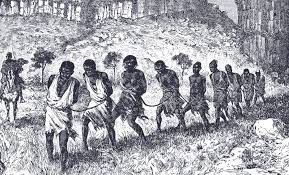This documentary looks at the inspirations behind Robert Wedderburn political drive for change

ABOUT
The Project
About Robert Wedderburn
Robert Wedderburn was born in Jamaica in 1762. His father was James Wedderburn, a white Scottish sugar plantation owner, and his mother Rosanna an African slave. His father sold his mother to another estate owner, Lady Douglass, whilst she was pregnant with Robert.
He did stipulate that when the child was born, he should be free. Wedderburn recalled that as a child he witnessed both his mother and grandmother being whipped. .His mother was eventually re-sold away from her son who was then raised by his maternal grandmother, a woman known as "Talkee Amy"
As soon as he was old enough, Wedderburn left the plantation and became a sailor. He arrived in England in 1778. He lived in the district of St. Giles, London a multicultural slum community frequented by immigrants and outlaws known as the "London blackbirds".
He made a meagre living as a journeyman tailor. In 1786 he heard an open air Wesleyan preacher outside Seven Dials and himself became a licensed Unitarian preacher opening his own chapel in Soho in 1890 where it was said up to 200 people would attend.
In 1810 he joined and later led the Spencean Society which followed Thomas Spence an English Radical and advocate of the common ownership of land. (Spence was one of the leading revolutionaries of the late 18th and early 19th centuries.)
Robert Wedderburn was instrumental in achieving the freedom of the press in Britain in the 19th century. He, with many other working class radicals spent time in prison for publishing opinions, on religious and other matters, which challenged the ideas of the ruling class. Police spies were always watching him. He was imprisoned 3 times , the last when he was 68.
He probably died aged 73 in 1835 a few years after his release.
Wedderburn criticised radical reformers. He argued that revolution rather than reform was what was needed. His vision was of simultaneous revolution of the poor in Europe and the black slaves in the West Indies.
Last Legs Dance Theatre.
Performers.
Like all influences from 'people of colour' before 1948, their untold stories remain in our liberation but not in our education. Last Legs Dance Theatre will tell Robert Wedderburn’s story through dance, text and music, pulling this history out from the fabric of our British culture and into the arena of discussion.
Directors Peter Anderson and Marie-Louise Flexen use Dance Theatre as the backbone to tell this story. They have collaborated with Louise Sprekelsen, a Professional Oboist and Chioma Uma, an Actress/Violinist to help construct the scaffolding that holds together the musical composition.
Last Legs Dance Theatre uses Contemporary Dance, Improvisation, Comedy and Music to produce Theatrical Productions. As mature dancers, they use their experience within Theatre to convey stories and themes that inspire their creativity. Their performances offer an alternative perspective on relevant subjects, expanding concepts that are both engaging and educational to audiences.
Peter Anderson is the voice of Robert Wedderburn telling the story through the experience of his research. Marie-Louise Flexen captures the surrounding elements of the different chapters throughout his life journey; from the abstract representation of oppression to male violence, political activists, and his wife Elizabeth Wedderburn.
Chioma Uma’s use of her Violin represents the spirit of Robert Wedderburn’s mother after being ripped away from her during his childhood through slavery. This suffering became a motivator for his demands of social equality.
The sound of the Oboe played by Louise Sprekelsen sets the ambience for the production and emulates Wedderburn’s strife and relentless struggle for change.
Due to Covid 19 this performance will be streamed live to an online audience with a following discussion covering the experience of its creation. A documentary will also be distributed online giving curious audiences access to the research behind the production of the Wedderburn story.
Our Mission.
While researching Robert Wedderburn’s history most of the information was written in an academic voice. There was a lack of easily accessible information about his life’s journey. It is our intention to fill that gap with Dance Theatre performances live and online, with additional supporting documentaries and online discussions.
Thank You.
Last Legs Dance Theatre would like to thank the collaboration of partners Arts Council England, Strike A Light, Pavilion Dance South West and Stroud Arts Festival for their input and support in order that this performance could be shared with a broader audience. We are so grateful for this opportunity to tell his story.




